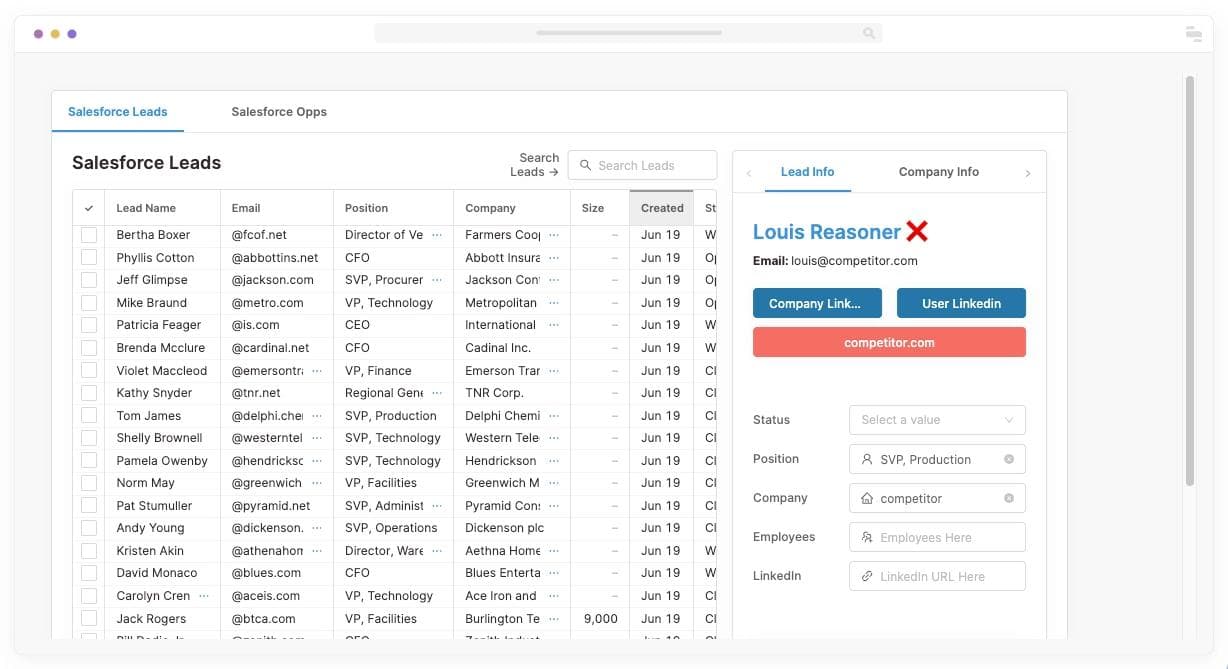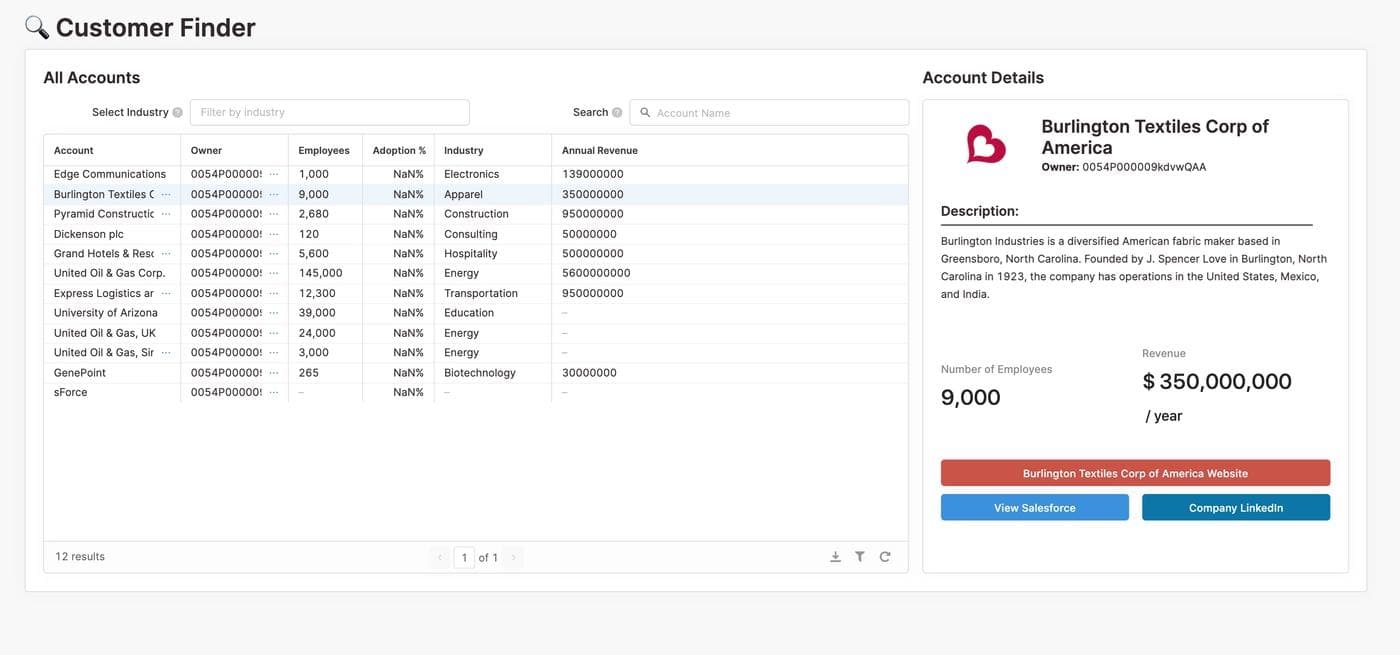As a technical SDR at Retool, I’m often the first person you’ll meet while getting started on our platform. I’m Devon and I help people navigate Retool, identify use cases, share best practices, and help their teams build internal apps faster.
I can’t do my job well if I don’t understand the people using Retool—who they are, the use cases they want to solve, and their behavior in our app. So for a long time, I’d dig across dozens of sales tools, endless tabs, and messy notes to prepare my thoughts before reaching out.
But this context switching was inefficient. I often felt like I couldn’t reach people fast enough. So I partnered with a few teammates to make this process easier.
This is the story of how 2 Retool apps automated away the messy parts of our SDR workflow and helped our entire sales team be more customer-centric.
Personalized outreach to dozens of new users is time-consuming, but can make a huge difference in helping users see that we understand them. Combining public data from a few staples—think Crunchbase, LinkedIn, Twitter, and GitHub—can help my messages be much more helpful.
But this isn’t the only data I need. Like most SDRs, I would often find myself digging through multiple Salesforce, Amplitude, and Intercom tabs to gather more information. It was a nightmare, but more importantly it was keeping me from spending more time actually engaging users.
So we consolidated the act of researching—and updating—user information into a single SDR Dashboard.

Our SDR dashboard improves many processes, but here are few stand outs:
- Everything we need to know is in one place. I can jump to a user’s LinkedIn, Twitter, or company website in one click. I can read and write data to Salesforce, like bulk updating the status of multiple leads at once, directly in the Retool dashboard—eliminating the need to login to Salesforce to update leads or records.
- We can understand the bigger picture. I need to know how many users from a business have been invited to Retool, what data sources have been connected, and take actions like extending trials. I can do this all now without needing to bother our data or engineering teams.
- Handoffs and deal reviews are a breeze. With all of my relevant notes and information in one place, I can copy and share everything about the account via Slack or email in one click. I’m able to share real-time updates with AEs, SEs, and leadership without a hassle.
With our SDR Dashboard, we’ve been able to interact with 30% more leads, create personalized experiences, and get back 2-3 hrs/week to refocus on engaging users.
Want to build your own? Get started with this template.
I’ll often hear, “how are people like us doing this?” and—for a long time—I struggled with providing a specific enough answer. Saying “we work with finance companies” is okay, but “we work with 43 Australian finance companies like you” is much better. I wanted a way to have this information on hand to help folks who wanted validation that Retool is the best choice for their situation.
Ryan, a Retool AE, helped turn this into a reality by exploring how we can solve this problem with a Retool app. We built a tool called the Customer Finder and, since its introduction, have been able to have much more specific conversations using proof points that matter.

Here are 2 ways our entire sales team uses this app:
- Sharing real proof points, fast. Before, we mostly relied on first-hand knowledge and tedious research to derive relevant proof points. But now, we can quickly filter all active customers by industry in seconds. If I’m on a call with a paper company from Scranton, I can tell them how many paper companies use Retool, what adoption rates look like, common obstacles and more.
- Learning about our customers. We don’t need to dig up notes or post on Slack to get the scoop on a customer. We’re able to use this tool to quickly access any relevant links for a given account, explore which teams we currently work with, and build bridges between departments to ensure that we're adding the most value possible to their organization.
This new workflow made the team more productive, and it's helped create a positive incentive for keeping Salesforce data—industries, revenue, MEDDIC—as accurate as possible because more teammates are using and vetting the data daily.
If you'd like to build your own, get started with our Customer Finder template.
These are just two examples of apps that our sales team uses on a daily basis. We’re always in the process of deepening how Retool and Salesforce work together for our team.
Here’s why:
- We can self serve analytics. We use Retool to join Salesforce data with data from our product database, Clearbit, Intercom, and HubSpot. Having more visibility means we can uncover trends and experiment faster.
- We can work how we want. Retool helps SDRs and AEs design our own apps, while still syncing everything back to Salesforce. It’s the best of both worlds.
- We can make complex tasks simple. You can embed Retool in Salesforce to give reps the ability to write back to other systems without complex Apex code or Lightning apps.
Retool plays a role in our daily lives as a sales team. As new teammates join, it’s great to see them jump into meetings prepared with real context about who they’re talking to and the customers they might be like.
That’s the big difference for us. It’s not that we can design our own apps or that it’s easy to make them a reality. It’s that we get to work the way we want and have access to tools that keep our eyes on the customer.
With that, I'm off to go talk to you. Want to explore how your team can use Retool? Say hello at devon@retool.com 👋
Reader



